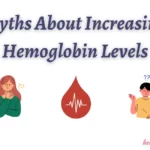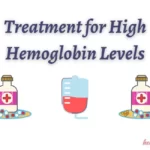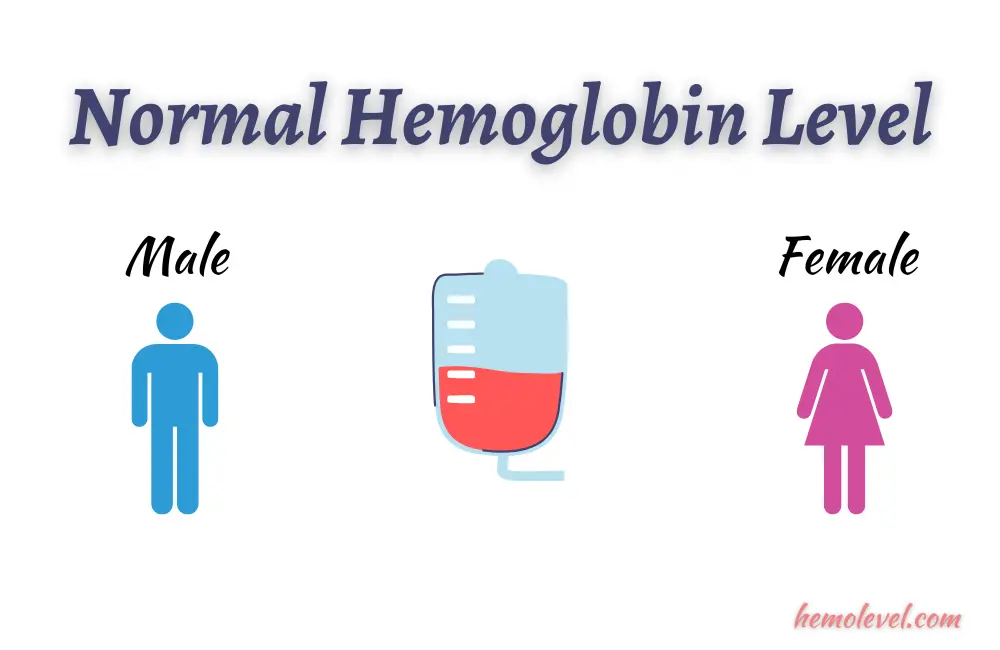Normal Hemoglobin Level
Last updated on December 14th, 2023
Introduction:
Hemoglobin is a protein found in red blood cells that plays a vital role in the body’s circulatory system. Its main function is to carry oxygen from the lungs to the body’s cells and tissues and to transport carbon dioxide from the cells and tissues back to the lungs to be exhaled. Without enough hemoglobin, the body’s cells and tissues wouldn’t receive the oxygen they need to function properly. This leads to a range of health problems. That’s why it’s important to maintain normal hemoglobin levels – too high or too low can both have negative consequences. In this article, we’ll explore what a normal hemoglobin level is, and the causes and symptoms of low hemoglobin levels. Also, we will explore how it can be treated.
What is a normal hemoglobin level?
So, what is considered a normal hemoglobin level? For adults, a normal hemoglobin level is generally considered to be within the range of 13.5 to 17.5 grams per deciliter (g/dL) for men and 12.0 to 15.5 g/dL for women. However, it’s important to note that these ranges may vary slightly depending on your age, sex, and where you live.
Normal Hemoglobin Level for Female :
- Age 12-18 years: 12.0 to 16.0 g/dl
- Age >18 years: 12.1 to 15.1 g/dl
Normal Hemoglobin Level for Males:
- Age 12-18 years: 13.0 to 16.0 g/dl
- Age >18 years: 13.6 to 17.7 g/dl
Factors that can affect hemoglobin levels include:
- Age: Hemoglobin levels tend to decline slightly as you get older.
- Sex: Men tend to have slightly higher hemoglobin levels than women.
- Altitude: Living at high altitudes can slightly increase hemoglobin levels.
It’s important to get regular hemoglobin level checks to ensure that your levels are within a healthy range. This can usually be done through a simple blood test, which can be ordered by your healthcare provider. If your hemoglobin levels are outside of the normal range, it’s important to speak with your healthcare provider.
Causes of low hemoglobin levels:
There are several potential causes of low hemoglobin levels, also known as anemia. Some of the most common causes of low hemoglobin levels include:
- Anemia: Anemia is a condition in which the body doesn’t have enough red blood cells or hemoglobin. There are several types of anemia, including iron-deficiency anemia (the most common type), vitamin-deficiency anemia, and anemia caused by chronic diseases.
- Blood loss: Hemoglobin levels can drop if you lose a significant amount of blood, either due to injury, surgery, or other causes such as ulcers or heavy menstrual periods.
- Nutritional deficiencies: Hemoglobin requires certain nutrients, such as iron, folate, and vitamin B12, to function properly. A deficiency in these nutrients can lead to low hemoglobin levels.
- Chronic illnesses: Certain chronic illnesses, such as kidney disease and cancer, can affect the body’s production of red blood cells and hemoglobin.
- Certain medications: Some medications, such as aspirin and nonsteroidal anti-inflammatory drugs (NSAIDs), can interfere with the body’s ability to produce red blood cells and hemoglobin.
If you suspect that you may have low hemoglobin levels, it’s important to speak with your healthcare provider to determine the cause and determine the appropriate treatment.
Symptoms of low hemoglobin levels:
Low hemoglobin levels can cause a range of symptoms, including:
- Fatigue: Anemia can cause fatigue because the body’s cells and tissues aren’t getting enough oxygen. You may feel tired and lacking in energy, even after getting a full night’s sleep.
- Shortness of breath: When the body’s cells and tissues aren’t getting enough oxygen, you may experience shortness of breath, especially during physical activity.
- Chest pain: Low hemoglobin levels can cause chest pain, especially if you have anemia caused by a chronic illness such as kidney disease or cancer.
- Pale skin: Anemia can cause your skin to look pale because there isn’t enough oxygen in your blood.
- Rapid heartbeat: Anemia can cause your heart to work harder to pump oxygen-rich blood throughout your body, leading to a rapid heartbeat.
If you’re experiencing any of these symptoms and suspect you may have low hemoglobin levels, it’s important to speak with your healthcare provider for proper diagnosis and treatment.
Treatment for low hemoglobin levels:
Treatment for low hemoglobin levels depends on the underlying cause. Some options may include:
- Dietary changes: If your low hemoglobin levels are caused by a nutritional deficiency, your healthcare provider may recommend making dietary changes to increase your intake of iron, folate, and vitamin B12. This may involve eating more foods that are rich in these nutrients, such as red meat, poultry, fish, beans, leafy green vegetables, and fortified cereals.
- Supplements: If dietary changes alone aren’t enough to raise your hemoglobin levels, your healthcare provider may recommend taking supplements, such as iron or vitamin B12. These supplements are usually taken orally in the form of pills or capsules.
- Medications: If your low hemoglobin levels are caused by an underlying medical condition, such as anemia or kidney disease, your healthcare provider may prescribe medications to help treat the underlying condition and raise your hemoglobin levels.
- Blood transfusions: In severe cases of anemia, a blood transfusion may be necessary to increase your hemoglobin levels. During a blood transfusion, you’ll receive donated red blood cells to help boost your body’s oxygen-carrying capacity.
It’s important to follow your healthcare provider’s treatment recommendations to raise your hemoglobin levels to a healthy range.
Conclusion:
Maintaining normal hemoglobin levels is important for overall health and wellness. Hemoglobin plays a vital role in carrying oxygen from the lungs to the body’s cells and tissues, and low hemoglobin levels can have negative consequences. In this article, we’ve explored the normal hemoglobin levels in adults, and the causes and symptoms of low hemoglobin levels. Also, we have explored how it can be treated.
If you have concerns about your hemoglobin levels, it’s important to speak with your healthcare provider. Regular hemoglobin level checks help ensure that your levels are within a healthy range. By getting regular check-ups and following your healthcare provider’s treatment recommendations, you can help maintain normal hemoglobin levels. This can also support your overall health.
Stay Healthy, Stay Happy!!!
Also Read:
- Most Common Questions on Hemoglobin Levels

- Myths about increasing Hemoglobin Levels

- Treatment for High Hemoglobin Levels: How to Lower Your Levels Safely

For more information visit: hemolevel.com

3 thoughts on “Normal Hemoglobin Level”
Comments are closed.